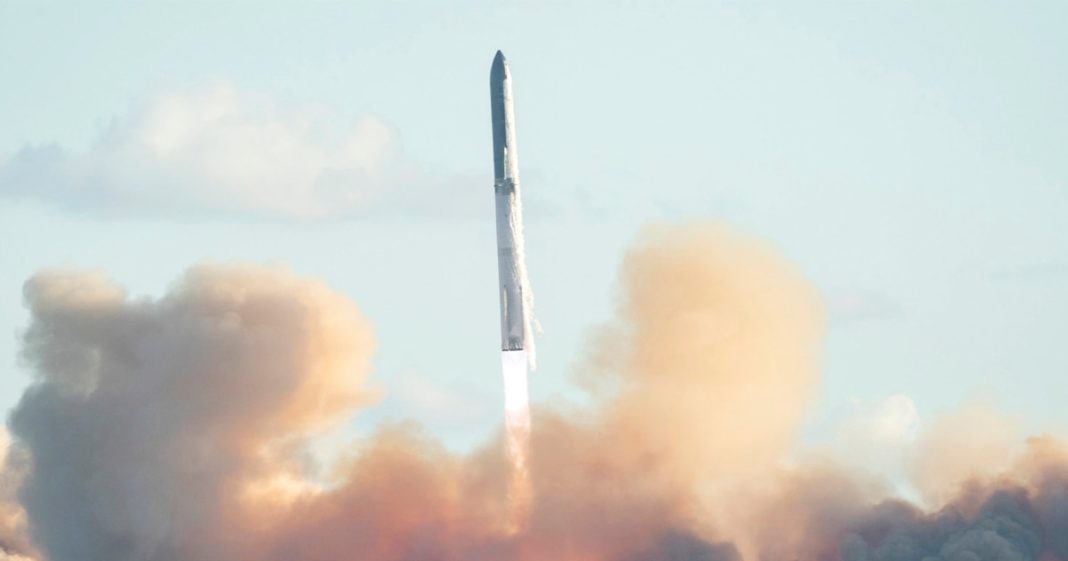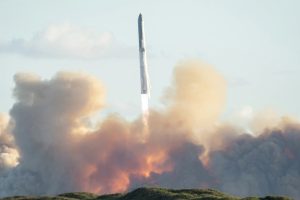Key Takeaways
- SpaceX successfully completed the 11th Starship test flight, landing in the Indian Ocean
- This was the final flight before testing a new, upgraded Starship version for Moon and Mars missions
- The mission tested critical systems including heat shield tiles and engine re-ignition
- NASA officials called it a “major step” toward returning Americans to the Moon
SpaceX has successfully launched and landed its Starship rocket for the 11th time, marking a crucial milestone before the company begins testing a more advanced version designed for lunar and Martian missions. The giant rocket lifted off from Texas and completed a soft water landing in the Indian Ocean, demonstrating key capabilities needed for future space exploration.
Mission Details and Achievements
The Starship, consisting of the upper stage stacked atop its Super Heavy booster, launched at 6:23 p.m. CT from SpaceX’s Starbase facilities. After sending the Starship stage to space, the Super Heavy booster returned for a controlled landing in the Gulf of Mexico approximately 10 minutes after liftoff.
Monday’s flight continued the success streak that began in August, following earlier testing failures. The mission replicated many aspects of the previous flight, including deploying mock Starlink satellites, briefly re-lighting engines in space, and testing new heat shield tiles during the blazing hot return from space before splashing down west of Australia.
Acting NASA Administrator Sean Duffy said on X the mission was “another major step toward landing Americans on the Moon’s south pole.”
Next-Generation Starship Development
SpaceX announced that future tests will involve a more advanced Starship prototype with upgrades essential for long-duration space missions. The upgraded vehicle will feature docking adapters and other hardware changes critical for orbital refueling – a complex process requiring two Starships to dock in orbit and transfer hundreds of tons of super-cooled propellant.
SpaceX President Gwynne Shotwell emphasized the significance of this new version, stating at a Paris conference: “The upgraded prototype is really the vehicle that could take humans to the Moon and Mars. So that’s really the one we want to get to.”
Shotwell expects this iteration of Starship to fly by year’s end or early next year, while CEO Elon Musk anticipates a refueling mission with two Starships occurring next year.
Artemis Program and Lunar Ambitions
Orbital refueling represents one of many remaining testing objectives required before Starship can carry humans to the lunar surface, currently scheduled for 2027. Under SpaceX’s proposed moonshot plan, multiple Starship tankers would be needed to fill one Starship with sufficient fuel for a moon landing.
This effort is part of SpaceX’s more than $3 billion contract awarded in 2021 under NASA’s Artemis program, which aims to return humans to the Moon for the first time since 1972. The contract positions SpaceX at the center of a new space race between the U.S. and China, with the latter targeting a crewed lunar landing by 2030.
However, NASA safety advisers recently warned that slow progress in developing elements of the rocket’s lunar lander design could potentially delay the U.S. moon effort by years. Successfully landing on the Moon’s rough surface remains a top priority that SpaceX must demonstrate.
Beyond lunar missions, Starship – the most powerful rocket ever launched and significantly larger than SpaceX’s Falcon 9 – is crucial for deploying heavier Starlink satellites essential to the company’s mobile broadband ambitions. The vehicle also represents the centerpiece of Musk’s long-term vision to eventually transport humans and cargo to Mars.





